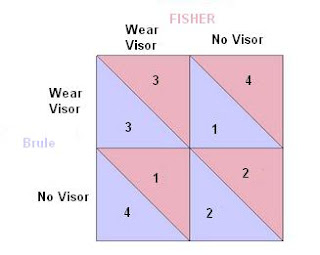One of the big headlines in Canada during late spring of this year was the referendum being held in B.C. to switch to a STV system. Currently, the province utilizes a "first-past-the-post" plurality system. As we learned during our class on Strategic Voting, the STV system allows each voter to rank their preference of candidates. This proposal further changes the mechanics of the system by grouping ridings into districts. As such, a vote can determine who is elected to a block of 2 to 7 seats (dependent on your district's population. The process is depicted in the chart below.
Organized Strategic Voting
This referendum was held in conjunction with the B.C. provincial election, which gives is direct insight into the types of strategic voting that occur in a plurality system. Our text mentions that in a plurality system strategic manipulation of votes can result from the introduction of a spoiler--a late entrant in the game who can shift the votes away from the leading candidate. For this election in B.C., we see another strategic manipulation called vote swapping.
One popular website that employed vote swapping was http://www.votepair.ca/. VotePair is a proponent of the STV system which it advertises as the solution for "eliminating the need for vote swapping". The system works as follows:
Let's say that your preferred candidate has no chance of winning in your riding. You can swap that vote out with someone else in the group who will vote for your party in a riding where it has a chance to win, while you will vote for the party that has the best chance to stop your least favorite party in your riding.
Dominant Strategies
Although vote swapping is gaining wide spread popularity, it is built on trusting that the person your are paired with will execute on their promise to vote for your candidate The dominant strategy for each individual is to lead the other to believe they will vote according to what they promised on VotePair, and then vote for their own personal preference. However, if both players follow their dominant strategy then they will lose the benefit that vote swapping provides.
Looking at it from another perspective though, if you intend to cheat/lie (and not carry out the promised vote), then you really have nothing to lose by participating in vote swapping. In the best case you will get 2 votes for your party (yours and your vote swap partner) and in the worst case you will still have your 1 vote for your party!
For more information on the STV system that was proposed in B.C. go to:
http://en.wikipedia.org/wiki/BC-STV

